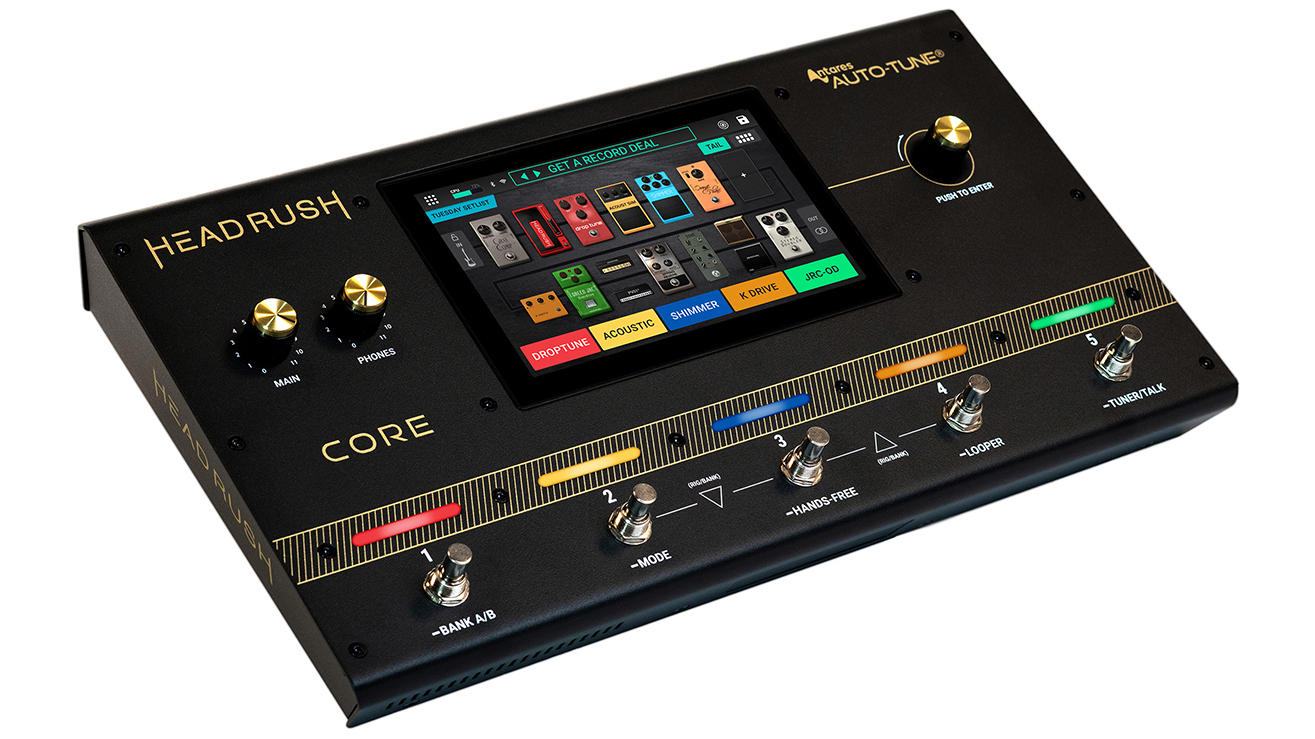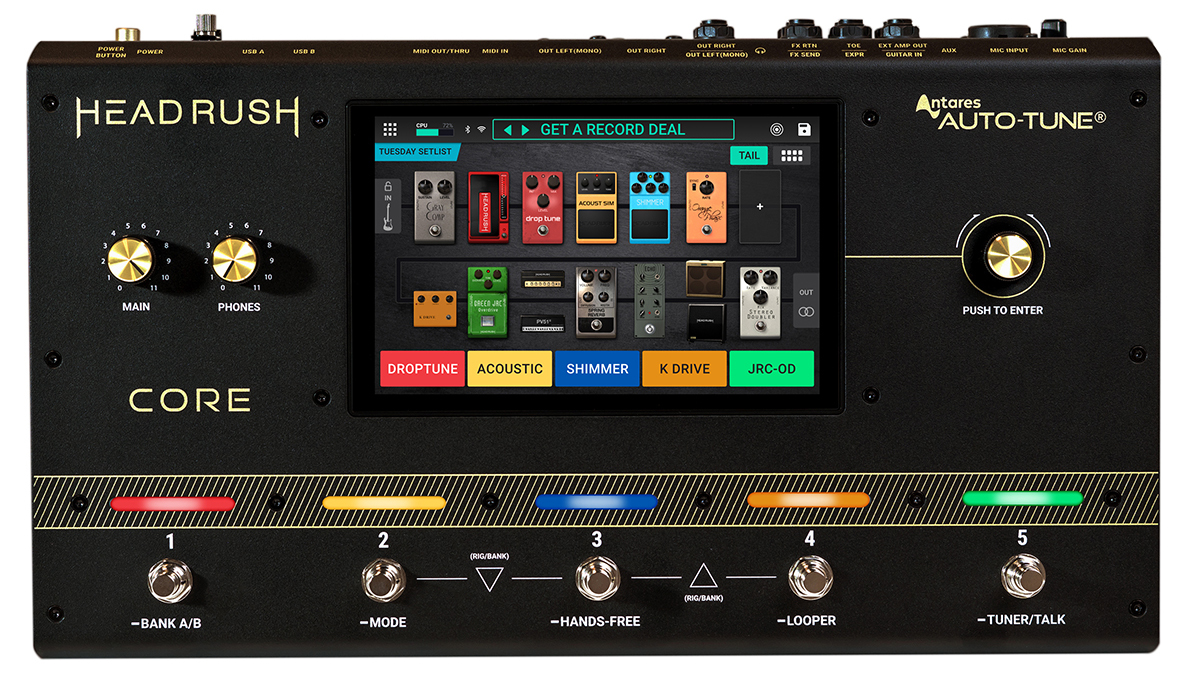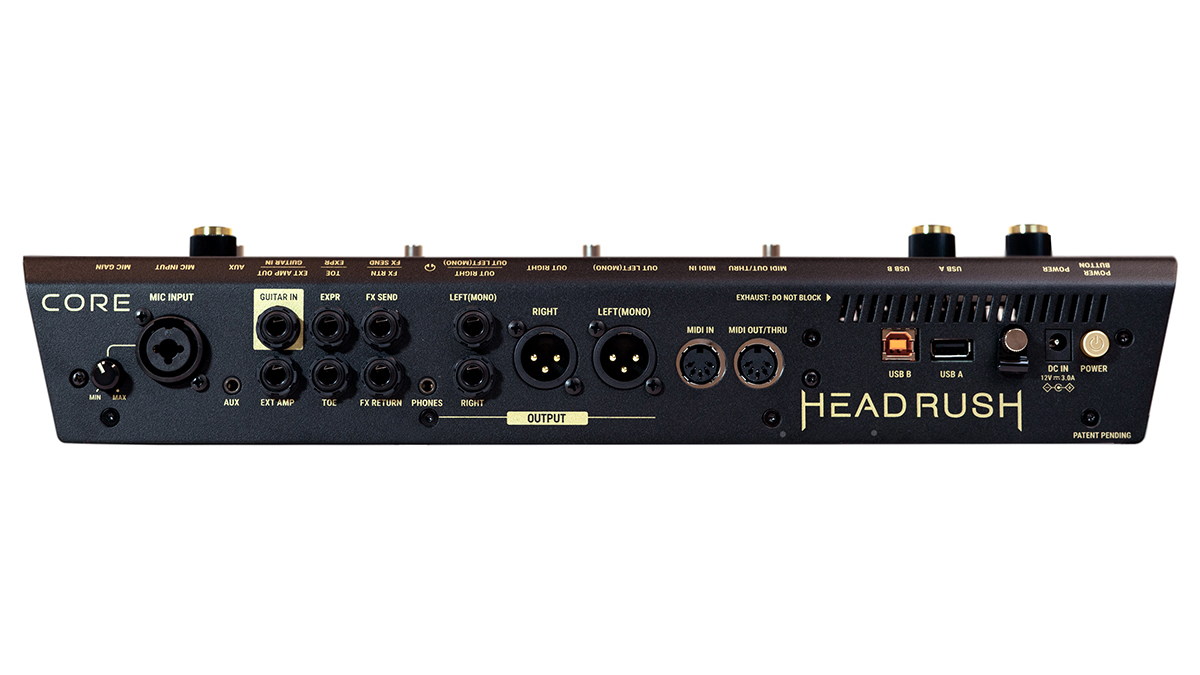
The guitar and bass multi-effects market is bustling with specs, and creaking under the weight of the sheer amount of features being offered to players. Modelling, profiling, complex signal paths… it wouldn't surprise us if an AI-assisted between-song banter processor is next.
Well, while we're on the subject; singers are often an overlooked group in all this. As well as being expected to hold the audience's attention during tuning / cymbal adjustment breaks, many vocalists play guitar too, so why shouldn't their needs be catered for without buying a separate processor. Headrush is here with some goodies for those people with its new Core, and more.
But in a year that has already seen the release of Headrush's Prime flagship unit with its own vocal processing that didn't get the attention it probably needed, what's the point of the Core?
It's smaller and cheaper at $999 / £759 vs the Prime's $1,299 / £999; cut down in terms of footswitches and size (there's no expression pedal either), but not processing and features elsewhere. Its launch also showcases Headrush's new 3.1.1 operating system that's available for Prime too. And size does matter; some players are simply turned off by big multi-effects and amp modelling units, and the Neural Quad Cortex and Line 6 Helix Stomp proved the demand for more compact solutions. The Core sits between the two camps visually, but Headrush has some strong features in its suite.

There's a huge library of mic, amp and cab models to choose from, effects galore (including 11 distortions/fuzz and 12 delays) but all with instantly recognisable pedal icons as to what their inspirations are. This kind of thing can really add to the user experience.
The Core can profile amps and effects with Amp Cloner and all that jazz but first impressions are everything with these kinds of units; you need to get to grips with them without the experience becoming frustrating or it sours things. The detailed 7-inch colour touchscreen here features visually familiar depictions of effects and the intuitive signal chain layout looks to be very much about user-friendliness here, like on the Prime.
For working musicians and duos it's easy to play audio files via a USB stick, and slow down audio files of parts you want to practice – using the footswitches to control them. You can even upload files to the Headrush unit's internal storage via WIFI and a cloud system. IT can stream audio over WIFI too. Clever. And of course there's a looper as well.
Get the MusicRadar Newsletter
Want all the hottest music and gear news, reviews, deals, features and more, direct to your inbox? Sign up here.

The effects specifically designed for vocals are significant; you can assign specific ones in your singing rig to footswitches, or if you have the unit positioned higher up, use the touchscreen. Antares Auto-Tune is included here and, alongside the unit's various compression and reverb options, there's vocal-specific De-Esser, Doubler, Vocoder, Stutter and Distortion.
The Headrush Core looks comprehensive as we'd expect in 2023 but it's the UI and vocal side of the unit – as on the Prime – that could set it apart in the market in the longer term. With so many options, the key is navigating them to get to what really matters; sounding great and having fun.
Find out more at Andertons, Sweetwater and Headrush.

Rob is the Reviews Editor for GuitarWorld.com and MusicRadar guitars, so spends most of his waking hours (and beyond) thinking about and trying the latest gear while making sure our reviews team is giving you thorough and honest tests of it. He's worked for guitar mags and sites as a writer and editor for nearly 20 years but still winces at the thought of restringing anything with a Floyd Rose.
“A pedal that sings with harmonic richness and blooming touch response”: Tone King offers up boutique tube amp tones for your pedalboard with the Imperial Preamp
“Each and every unit is perfectly dialled in to the 'sweet spot' that can be so elusive to find in vintage pedals”: Pigtronix’s Gas Giant is a high-gain fuzz pedal with a FET-driven onboard noise gate









